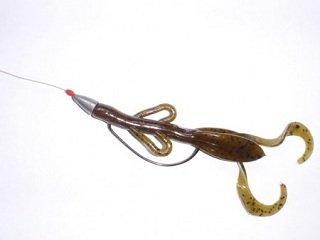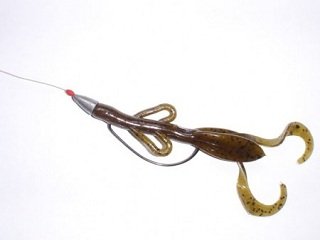 No fisherman can call themselves a true angler until they’re knowledgeable on the basic, but vital, facets of the sport. Such knowledge includes knot tying, accurate casting, proper fish handling, and bait rigging. A good bass fisherman should know how to utilize a variety of rigging options, from drop-shots to Carolina rigs, and especially Texas rigs. Highly effective, Texas rigs can be used with a number of bait styles, and the rig has long been a popular choice among bass anglers for years. It’s incredible easy to set up and even easier to fish. Below, you’ll find a quick crash course on the Texas rig and if you’ve never used it before, you’ll have it mastered in no time after reading.
No fisherman can call themselves a true angler until they’re knowledgeable on the basic, but vital, facets of the sport. Such knowledge includes knot tying, accurate casting, proper fish handling, and bait rigging. A good bass fisherman should know how to utilize a variety of rigging options, from drop-shots to Carolina rigs, and especially Texas rigs. Highly effective, Texas rigs can be used with a number of bait styles, and the rig has long been a popular choice among bass anglers for years. It’s incredible easy to set up and even easier to fish. Below, you’ll find a quick crash course on the Texas rig and if you’ve never used it before, you’ll have it mastered in no time after reading.
The Texas rig is designed to get bait through thick cover and vegetation, down to the bottom where anglers can work it slowly to entice fish. Obviously, if you’re fishing such heavy cover, you’ll need to use heavier line, somewhere in the 14 to 20-pound range for monofilament, for example.
One nice aspect of the Texas rig is that it is very accurate and very silent both during the cast and in the water. Most anglers flip the rig into holes in lily pads or grass, where the weight will bring it straight to the bottom. After that, you need to twitch it softly while reeling in a little bit of line at a time. This is where the common errors occur, however, as many anglers can’t tell the difference between a bite and structure beneath the water. Strikes on a Texas rig will feel like a twitch, as bass inhale the bait. Of course, you’ll also need to know how to properly set the hook with a Texas rig once you feel a bite. Set it too soon and you’ll lose a fish. Hesitate, and the fish will drop the bait or swallow it, which leads to unnecessary injuries to the fish. The trick when setting the hook is reeling in the slack and then using a slow, but strong hookset.
There aren’t many components that comprise a Texas rig—hook, bait, sinker (most use a bullet weight), and a bead, if you so choose—and setting it up takes only a few moments. First, you’ll need to slide the sinker onto your line and then the bead, if you’re using one. A bead creates a clacking sound when it collides with the weight and can attract fish with sound when visibility is low. Next, tie on the hook and then it’s time to attach whatever bait you’re throwing. The bait should be rigged weedless so it won’t snag on anything. Also, be sure to insert and align the hook as straight as possible, in order to prevent it from having an unnatural appearance in the water.
The Texas rig has earned a reputation as one of bass fishing’s best techniques for many reasons. It’s easy and cheap to set up, accurate when casted correctly, and deadly efficient in terms of enticing fish. Also, anglers can use a number of different bait styles with it, each with a different action in the water, which enables the rig to be highly versatile. If you’ve never used a Texas rig before, I highly suggest picking up a few worms, craws, or creature baits this season. Locate some vegetation or submerged trees and pick the area clean with deadly accuracy. They say everything’s bigger in Texas, well that also includes the size of the bass you’ll land with this amazing technique.








